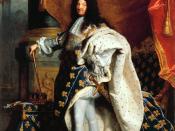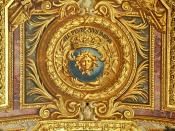The Absolute Center of an Absolute King�
An analytical summary of Louis Marin's "Classical, Baroque: Versailles, or the Architecture of the Prince"
�
By Olaf Lyczba
April 22, 2010
Introduction
Louis XIV's France was an absolute monarchy, meaning the king had the power, control, finances and the nation in his hands more then ever before. In the 17th century, France was the strongest and wealthiest nation in Europe, and the head of the state, the king, was the most influential person of the time. In the ideas of the scientific revolution and the soon-coming changes of the enlightenment the country was developing. For a few decades France was not involved in any major wars or battles and the peace helped the population grow fast.
Life in Paris however was nothing like we think of it today. The overpopulated capital suffered from lack of space, diseases, and many other problems caused by urbanization.
The royal court was located in the centre of paris, making the king live an isolated life because of all the issues previously mentioned. The only logical solution was to move the court with all the people to a new, fresh and open location, matching the rank of them.
The palace of Versailles is a building complex in the city of Versailles, right outside of Paris. It was an often visited royal hunting place of Louis XIII. It is now one of the biggest palaces in the world, which once served as the home of the French royalty. Its building began in the 17th century when the chateau and the surrounding parks were constructed. Later Louis XIV decided to expand the building and make it the center of the king and the governing location of the French monarchy. Louis XV added new parts as well,


